MONUMENT POUR SORCIÈRE
2019
(english and czech version here above)
Vidéo 4K, 10'', 2019.
Vidéo-projection nomade et contextuelle dans l'espace public, à l'échelle de l'architecture.
La 1ère projection sur l'invitation de Luxfer Gallery, Ceská Skalice, République Tchèque (30/04/2019, 19h30-24h).
La pièce voyagera, comme un monument nomade, pour apparaître dans diffèrents endroits du monde, portant une mémoire et une actualité de la figure de sorcière.`
Si elle est aujourd’hui revendiquée, non sans volonté de défi, par certaines activistes féministes, la figure de la sorcière demeure contradictoire, provocatrice, paradoxale. Elle n’est jamais innocente, tant elle est portée par une histoire qui n’a rien d’un conte de fée. Être désignée comme sorcière, c’est toujours être accusée. Et d’abord être accusée d’être femme. Au mieux, sous la charge d’une misogynie ordinaire, de la banalité du mépris du féminin ; mais aussi dans l’héritage criminel, parfois toujours actif : car on brûle encore de nos jours de prétendues sorcières, comme on l’a fait à l’échelle collective dans les siècles pas si lointains où les croyances servaient de prétexte à la domination masculine. Du féminicide de grande échelle dont l’Europe a été capable aux représentations carnavalesques, la chasse aux sorcières n’est jamais un jeu sans conséquences, ni les attributs de sa représentation gratuits. Peut-on, doit-on vraiment oublier, lors de la nuit de Walpurgis chaque 30 avril, dans la joie des bûchers de fête, même sous l’apparence de la farce et de la coutume sociale de la fête, les crimes dont ils sont la mémoire ?
En l’inscrivant dans l’espace public, sous la forme de la projection sur l’architecture, l’artiste franco-tchèque Catherine Radosa propose une lecture sur plusieurs niveaux de la figure de la sorcière avec Monument pour sorcière, une œuvre créée à l’invitation de la Galerie Luxfer à ?eská Skalice. L’image vidéo projetée est un monument éphémère, une apparition furtive qui se glisse dans divers points de la ville au cours de la soirée. Elle met en scène un personnage dont les attributs vestimentaires, capes, robes, servent de support à des images venues de toutes sortes d’archives —gravures du XIXe siècle, images de presse contemporaines, performances d’activistes, mais aussi éléments (eau, feu) et attributs— dans une forme de chorégraphie libératrice, de séquences, d’instants où le corps mis en scène s’adonne à un sabbat joueur, émancipateur, ironique mais très incarné.
Avec la distance de l’artiste, mais aussi son engagement, avec des images qui tiennent du document et du théâtre, Catherine Radosa prolonge la soirée du 30 avril entre célébration et dénonciation, entre fête et satire.
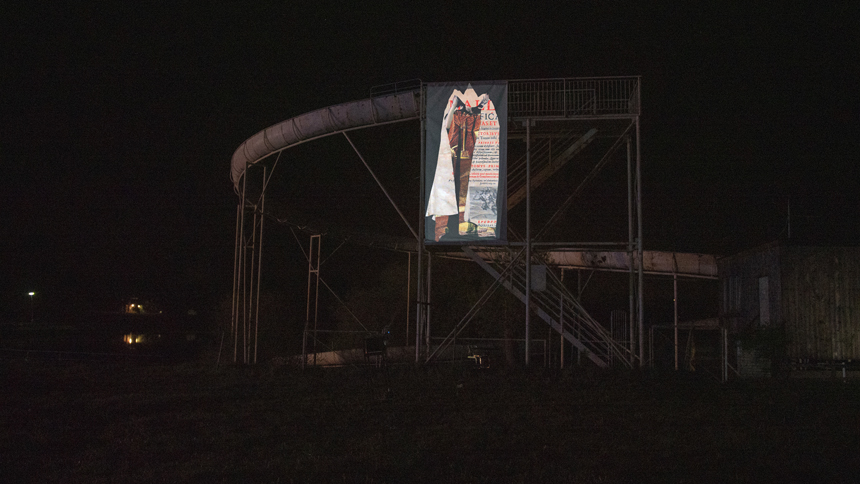
Monument pour sorcière, projection dans l'espace public à Ceska Skalice (Rép. Tchèque) © Catherine Radosa, 2019

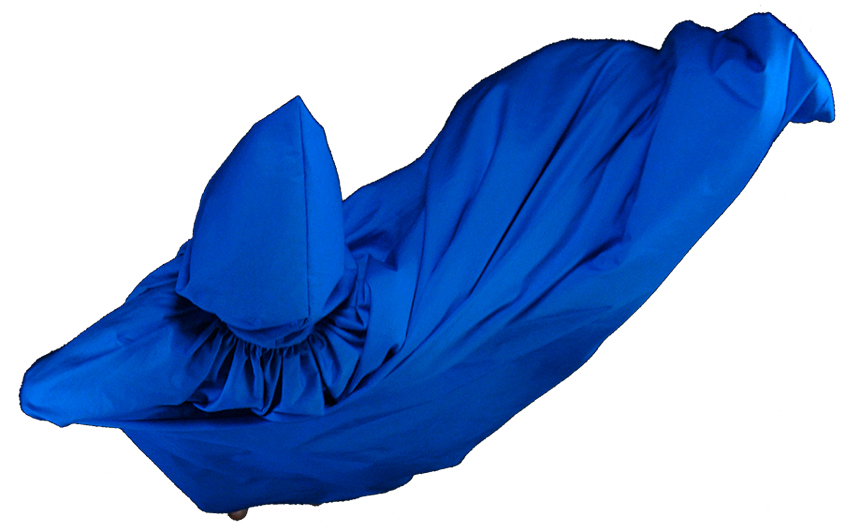
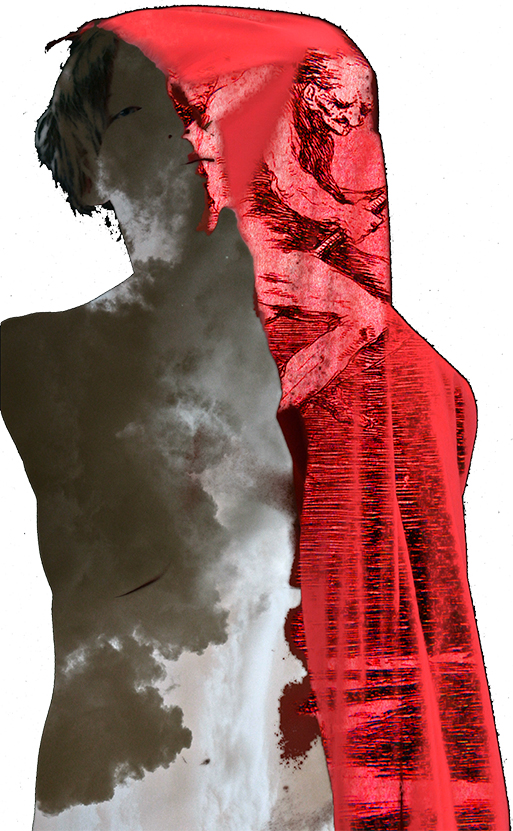
Monument pour sorcière, videogramme © Catherine Radosa, 2019
MONUMENT FOR A WITCH
If today it is claimed, not without defiance, by certain feminist activists, the figure of the witch remains contradictory, provocative, paradoxical. She is never innocent, carried by a story that is not a fairy tale. To be designated as a witch is always to be accused. And first of all, to be accused of being a woman. At best, under the burden of ordinary misogyny, of the banality of contempt for the feminine; but also in the criminal heritage, sometimes always active: for sometimes we still burn so-called witches in our days, as we did on a collective scale in the not so distant centuries when beliefs were used as a pretext for male domination. From the large-scale feminicide that Europe has been able to achieve to carnival performances, witch-hunting is never a game without consequences, nor are free the attributes of its representation. Can we, must we really forget, on the night of Walpurgis every April 30, in the joy of the festive bonfires, even under the appearance of the farce and the social custom of the celebration, the crimes of which they are the memory?
By placing it in the public space, in the form of a projection on architecture, the Franco-Czech artist Catherine Radosa offers a multi-level reading of the figure of the witch with Monument for Witch, a work created at the invitation of the Luxfer Gallery at ?eská Skalice. The projected video image is an ephemeral monument, a furtive apparition that slips into various parts of the city during the evening. It features a character whose clothing attributes, capes, dresses, serve as a support for images from all kinds of archives - 19th century engravings, contemporary press images, activists' performances, but also elements (water, fire) and attributes - in a form of liberating choreography, sequences, moments when the staged body devotes itself to a playful, emancipating, ironic but very incarnate Sabbath.
With the artist's distance, but also her commitment, with images that resemble documents and theatre, Catherine Radosa extends the evening of April 30 between celebration and denunciation, between festivities and satire.
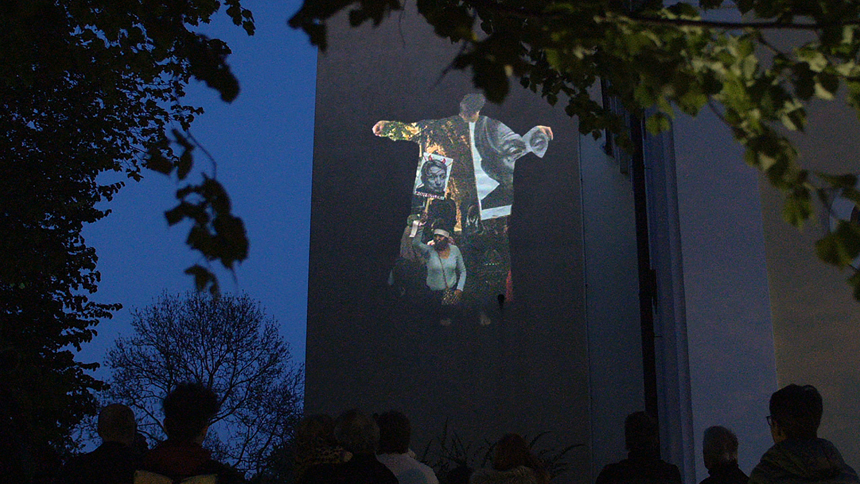
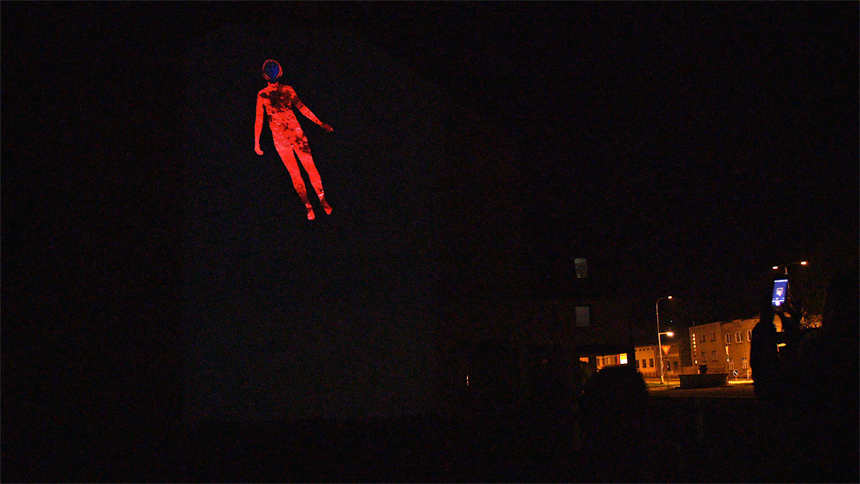
Monument pour sorcière, projection dans l'espace public à Ceska Skalice (Rép. Tchèque)
PAMATNIK PRO CARODEJNICE
Nomádní a kontextuální video projekce na architekturu ve ve?ejném prostoru, na pozvání Galerie Luxfer v Ceské Skalici (30/04/2019, 19h30-24h).
Vidéo 4K, 10'45'', 2019.
P?esto, že je dnes postava ?arod?jnice, ne bez v?domé výzvy, n?kterými feministickými aktivistkami oslavována, z?stává stále rozporuplná, provokativní a paradoxní. Poznamenaná p?íb?hem, který nemá v sob? nic z pohádky, její „ocejchování“ není nikdy nevinné. Být ozna?ena za ?arod?jnici znamená vždy být obvin?na, a to p?edevším z toho, že jste žena. V nejlepším p?ípad? pod vlivem misogynní banality pohrdání ženami, ale také v zlo?inném d?dictví, kterého jsme ješt? dnes sv?dky. Stále upalujeme takzvané ?arod?jnice, jak tomu bylo v masovém m??ítku v ne tak vzdálených stoletích, kdy víra sloužila jako záminka pro mužskou nadvládu.
Od rozsáhlé feminicidy, kterou byla Evropa schopna, po karnevalové oslavy, není hon na ?arod?jnice nikdy hrou bez následk?, tak jako atributy jejich zobrazování. M?žeme skute?n? každého 30. dubna v pr?b?hu Walpuržiny noci zapomenout na zlo?iny, kterých jsou p?ipomenutím i p?es radosti z oslav a páleni hranic, i z pohledu frašky a spole?enského zvyku?
?esko-francouzská um?lkyn? Catherine Radosa nabízí prezentaci postavy ?arod?jnice na n?kolika úrovních. Jejím umíst?ním do ve?ejného prostoru, formou projekce na architekturu, vytvá?í pomník ?arod?jnice, dílo realizované na pozvání Galerie Luxfer v ?eské Skalici. Promítaný obraz je pomíjivý pomník, zjevení, které b?hem ve?era prochází r?znými ?ástmi m?sta. Vyzna?uje se postavou, jejíž atributy, oble?ení a plášt? slouží jako podklad pro zobrazení r?zných druh? archivních dokument? – rytiny z devatenáctého století, dobové tiskové obrazy, p?edstavení aktivist?, ale i živl? (voda, ohe?) - ve form? osvobozující choreografie, sekvencí, moment?, ve kterých se inscenované t?lo v?nuje hravému, emancipa?nímu, ironickému, ale i velmi zt?lesn?nému sabatu.
S angažovaností a s odstupem, skrze dokumenty a divadelní prvky, Catherine Radosa provede ve?erem 30. dubna, mezi oslavováním a odsouzením, obdivem a satirou.
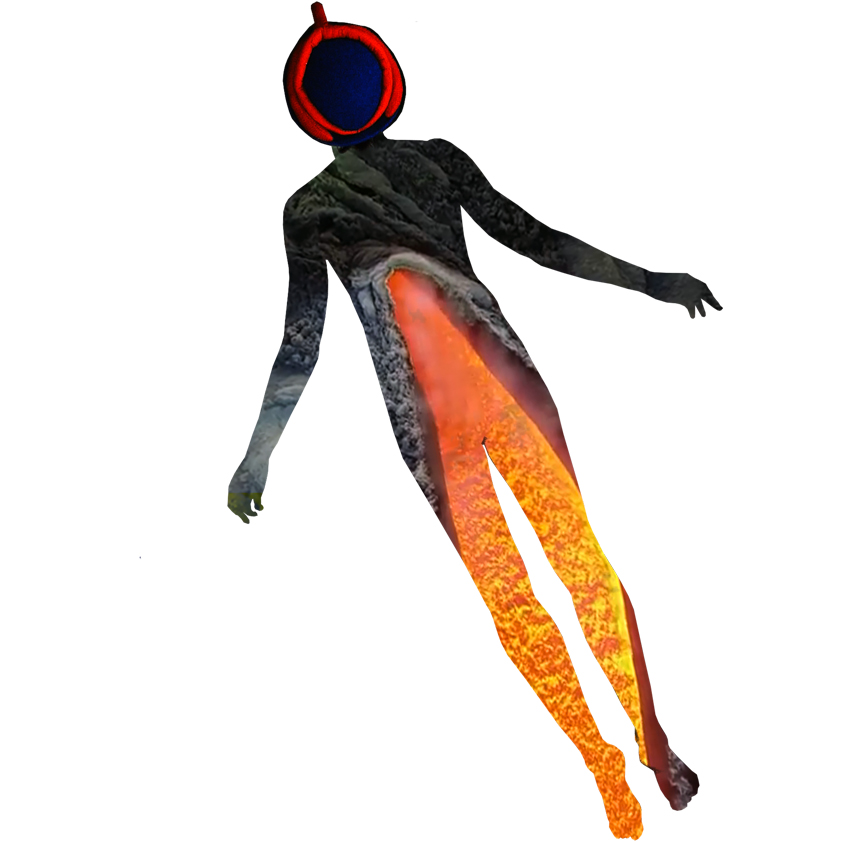
Monument pour sorcière, videogramme
|